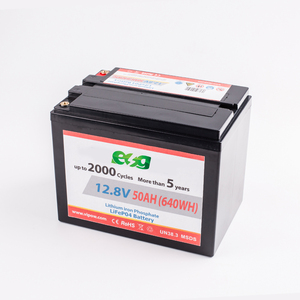
All categories
Featured selections
Trade Assurance
Buyer Central
Help Center
Get the app
Become a supplier

(141951 products available)




















































The solar powered scooter has a solar panel mounted on the body that harnesses sunlight and converts it into electrical energy. This energy is stored in an inbuilt battery to power the scooter's motor. The solar-assisted electric scooter is designed to make commuting more sustainable and environmentally friendly by reducing carbon emissions and dependence on fossil fuels.
Solar-powered scooters come in different types and designs, each offering unique features and benefits. Here are the main types:
Solar-powered scooters are very versatile and can be used in many ways. Here are some common usage scenarios:
Commuting
Solar-powered scooters are used for daily commuting. They provide a sustainable and efficient way of moving through urban traffic. With the energy harnessed from solar panels, the scooters can cover long distances. This makes them ideal for getting to work, schools, and other places.
Last-Mile Delivery
These scooters are useful for last-mile delivery services. Businesses can make deliveries within a short time frame as they navigate through congested streets. Also, the solar charging feature reduces operating costs. This helps businesses become more efficient and sustainable.
Recreational Use
Solar-powered scooters are great for recreational rides. Whether it's exploring new trails or cruising around the neighborhood, the scooters offer an enjoyable experience. Additionally, the solar charging capability allows users to take long rides without worrying about battery depletion.
Tourism
Solar-powered scooters are used in the tourism industry, where they provide eco-friendly transportation alternatives for tourists. This enables tourists to explore popular tourist attractions. Moreover, they can move around cities at their own pace while minimizing their carbon footprint.
Campus Transportation
Solar-powered scooters are used in large university campuses. Students use them for moving around quickly and efficiently. With solar charging stations located around the campus, students can easily recharge their scooters between classes.
Emergency Services
The scooters can be used by emergency services in dense urban areas. They provide a quiet and non-intrusive mode of transportation for emergency medical services. Also, law enforcement agencies and disaster response teams can use the scooters to navigate through affected areas. This helps them reach their destinations quickly.
Eco-Friendly Initiatives
These scooters are incorporated into various eco-friendly initiatives and programs. For instance, some cities fund solar-powered scooter-sharing programs to reduce traffic congestion and greenhouse gas emissions. Businesses also encourage employees to use solar-powered scooters.
When choosing a solar powered scooter, there are several important factors to consider to ensure that the scooter meets the user's needs and preferences. Here are some key aspects to evaluate:
Transportation
Solar-powered scooters are mainly used for transportation. They help individuals move from one point to another while consuming less energy. In urban settings, solar-powered scooters can reduce congestion and the level of pollution emitted into the environment. Additionally, these scooters can help locals save money on fuel.
Recreation
Solar-powered scooters are also used for recreational purposes. People enjoy riding the scooters in their free time. The scooters have made it more fun to commute short distances.
Solar charging panels
Solar charging panels are integrated into the body of solar-powered scooters. The panels are used to capture sunlight, which is then converted into energy to charge the battery. The panels make solar-powered scooters eco-friendly and energy-efficient alternative transportation options.
Lightweight frame
Most manufacturers use lightweight materials, such as aluminum, to make the frame of solar-powered scooters. A lightweight frame makes it easier for riders to maneuver and control the scooters. Moreover, the lightweight frame allows riders to accelerate more quickly.
Adjustable handlebar
Solar-powered scooters come with an adjustable handlebar. Riders can adjust the handlebar to their preferred height. An adjustable handlebar improves the comfort and control of the scooter.
Comfortable footrest
Most solar-powered scooters come with a footrest. The footrest provides comfort and support to riders' feet as they ride the scooters.
Battery type
The battery used in solar-powered scooters is often lithium-ion. Lithium-ion batteries have a longer lifespan and take a short time to charge. In addition, they are lightweight and provide consistent energy.
Seating Solar-powered scooters
These scooters are designed to have a seat like a regular bike. The seats make riding easier and more comfortable. They also help maintain stability. The seats are designed to ensure that the center of gravity is balanced and positioned appropriately. A well-positioned seat enhances control and reduces the risk of accidents.
Storage space
Some solar-powered scooters have storage space. It can be a small compartment located just below the seat. The storage space is convenient for carrying small items.
Fenders
Solar-powered scooters come with front and rear fenders. The fenders protect the wheels from splashes and debris. They also help keep the solar charging panels clean.
Q: Can a solar-powered scooter run on cloudy or rainy days?
A: Yes, a solar-powered scooter can run on cloudy or rainy days. During these conditions, the solar panels can still capture the sunlight available. The solar-powered scooters will still charge but at a slower rate.
Q: How long do solar-powered scooters last?
A: Solar-powered scooters can last for about 15 to 20 years. During this time, the solar panels will continue to generate energy to power the batteries. With proper maintenance, the scooters can remain functional for a long time.
Q: Can users override the solar charging system?
A: Users can override the solar charging system if they want to. The solar-assisted charging system is designed to be user-friendly and easy to control. Users can manually override the system to optimize battery life and performance.
Q: Are solar-powered scooters more expensive than regular scooters?
A: Solar-powered scooters cost more than regular scooters. Their upfront costs are higher due to the added solar charging system. Manufacturers factor in the costs of the solar panels and batteries. Despite the high initial costs, users save money in the long run.